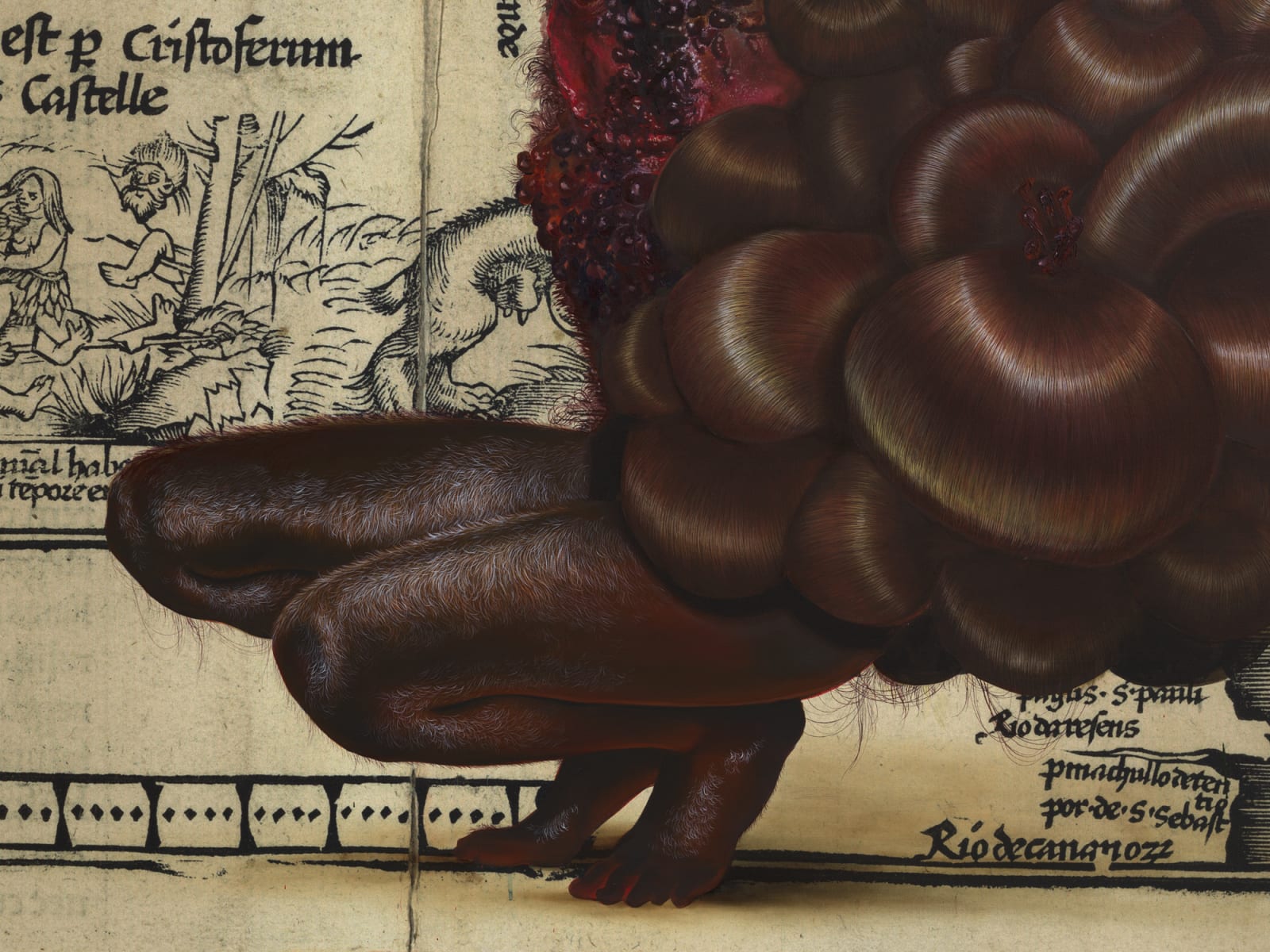-
Artworks
 Photo: Phoebe d'Heurle.
Photo: Phoebe d'Heurle.
 Photo: Phoebe d'Heurle.
Photo: Phoebe d'Heurle.
 Photo: Phoebe d'Heurle.
Photo: Phoebe d'Heurle.
 Photo: Phoebe d'Heurle.
Photo: Phoebe d'Heurle.
 Photo: Phoebe d'Heurle.
Photo: Phoebe d'Heurle.
Untitled (Terra Nova), 2020
Oil and acrylic on printed canvas102 7/8 x 132 3/8 x 1 5/8 in
261.1 x 336.1 x 4 cmSoldFurther images
In this work, a ciguapa figure crouches at the base of “Terra Nova,” an engraved atlas map from 1541 that depicts America as a vaguely-articulated landmass west of a central...In this work, a ciguapa figure crouches at the base of “Terra Nova,” an engraved atlas map from 1541 that depicts America as a vaguely-articulated landmass west of a central Oceanus Occidentalis (Atlantic Ocean) and the western coasts of Great Britain, Europe, and Africa. The map features a Spanish flag floating over Cuba, and vignettes depicting cannibalistic “Indians” and an opossum. Below Hispaniola—the artist’s birthplace—is a notation written in Latin describing its discovery by Columbus and its resources. Intervening in the extractive and exploitative mapping of “Spagnolia,” Báez renders a female character whose knotted hair sprouts leafy red fronds and orchid petals, obfuscating the hybrid figure’s torso and spreading their tendrils across this text.
This ciguapa is comprised in part by palm imagery, which refers to a line in a poem about Cuba by José Martí, translated as “the palms are like brides who await my return.” While there is romance in this language, the artist explains, “at the same time it is also violent: the idea of a female body being lost in a landscape, needing to be activated.” By incorporating this imagery into a ciguapa—known for being strikingly active and self-reliant—the character becomes “so possessed of her body that she can easily, acrobatically, move between spaces.”Exhibitions
James Cohan Tribeca, Firelei Báez, March 8 - April 25, 2020
Museum of Modern Art, Chosen Memories: Contemporary Latin American Art from the Patricia Phelps de Cisneros Gift and Beyond, April 30 - September 9, 2023
Publications
Golden, T., Respini, E., Godfrey, M., Acevedo-Yates, C., & Russell, L. (2022). Firelei Báez: To breathe full and free (D. Norr, Ed.). New York, NY: Gregory R. Miller & Co., pp. 216-17.1of 2









